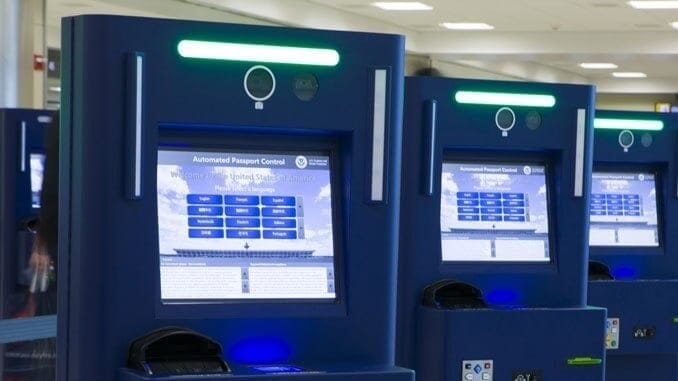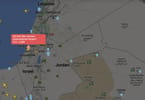Today, the implementation of four kiosks took place at Keflavik International Airport (KEF) in Iceland. The kiosks are part of a six-month pilot to simulate the impending requirements of the Entry/Exit System (EES) of the Schengen Area, which comprises 26 European states that have officially abolished all passport and all other types of border control at their mutual borders. This is the first automated kiosk-based border control solution in a Schengen member state.
The EES is a part of the Smart Border package introduced by the European Commission. It will be fully operational in all the Schengen countries by the end of 2021. The main purpose of the EES is to register data on entry, exit and refusal of entry of third country nationals crossing the external borders of all Schengen member states through a central system.
KEF is the largest border crossing point in the country with more than 95 percent of the passengers entering the Schengen area through Iceland coming through this airport. The kiosks are available for Third Country Nationals (TCN) and EU citizens to use when entering Iceland. The kiosks have been customized to meet specific requirements of the Icelandic police.
“We at Isavia are always looking for ways to enhance and improve self-service automation for our passengers,“ says Gudmundur Dadi Runarsson, Technical and Infrastructure Director at Keflavik Airport. “By running a pilot for this new and innovative solution we want to gather information and prepare ourselves to make the process easier for everyone when the new regulations are implemented. These new kiosks will help to speed up the process for passengers, improve their experience and ensure an enjoyable journey through Keflavik Airport and will provide important information for the development and operation of our new border facility expected to come into use in 2022.”
In July 2018, the first permanent kiosks to provide Entry and Exit border control in Europe launched with of 74 biometric-enabled kiosks at Pafos International Airport and Larnaka International Airport in Cyprus.
They use self-service biometric-enabled kiosks to expedite the border control process. At the kiosk, travelers select their language, scan their travel documents and answer a few simple questions. The kiosk also captures an image of each passenger’s face which can be compared with and verified against the photo in their electronic passport. Travelers then take their completed kiosk receipt to a border services authority.
These kiosks are proven to reduce passenger wait times by more than 60 per cent. In a recently published White Paper by InterVISTAS, the study concluded that the use of kiosks for border control significantly outperforms traditional immigration processing with a border officer. This results in cost and space savings and allows border authorities to focus on maintaining the safety of the border. These kiosks provides better exception handling, are fully accessible to persons with disabilities, and can be configured with up to 35 different languages. It can process any passenger, including families traveling as a group.
WHAT TO TAKE AWAY FROM THIS ARTICLE:
- The kiosks are part of a six-month pilot to simulate the impending requirements of the Entry/Exit System (EES) of the Schengen Area, which comprises 26 European states that have officially abolished all passport and all other types of border control at their mutual borders.
- These new kiosks will help to speed up the process for passengers, improve their experience and ensure an enjoyable journey through Keflavik Airport and will provide important information for the development and operation of our new border facility expected to come into use in 2022.
- The main purpose of the EES is to register data on entry, exit and refusal of entry of third country nationals crossing the external borders of all Schengen member states through a central system.























